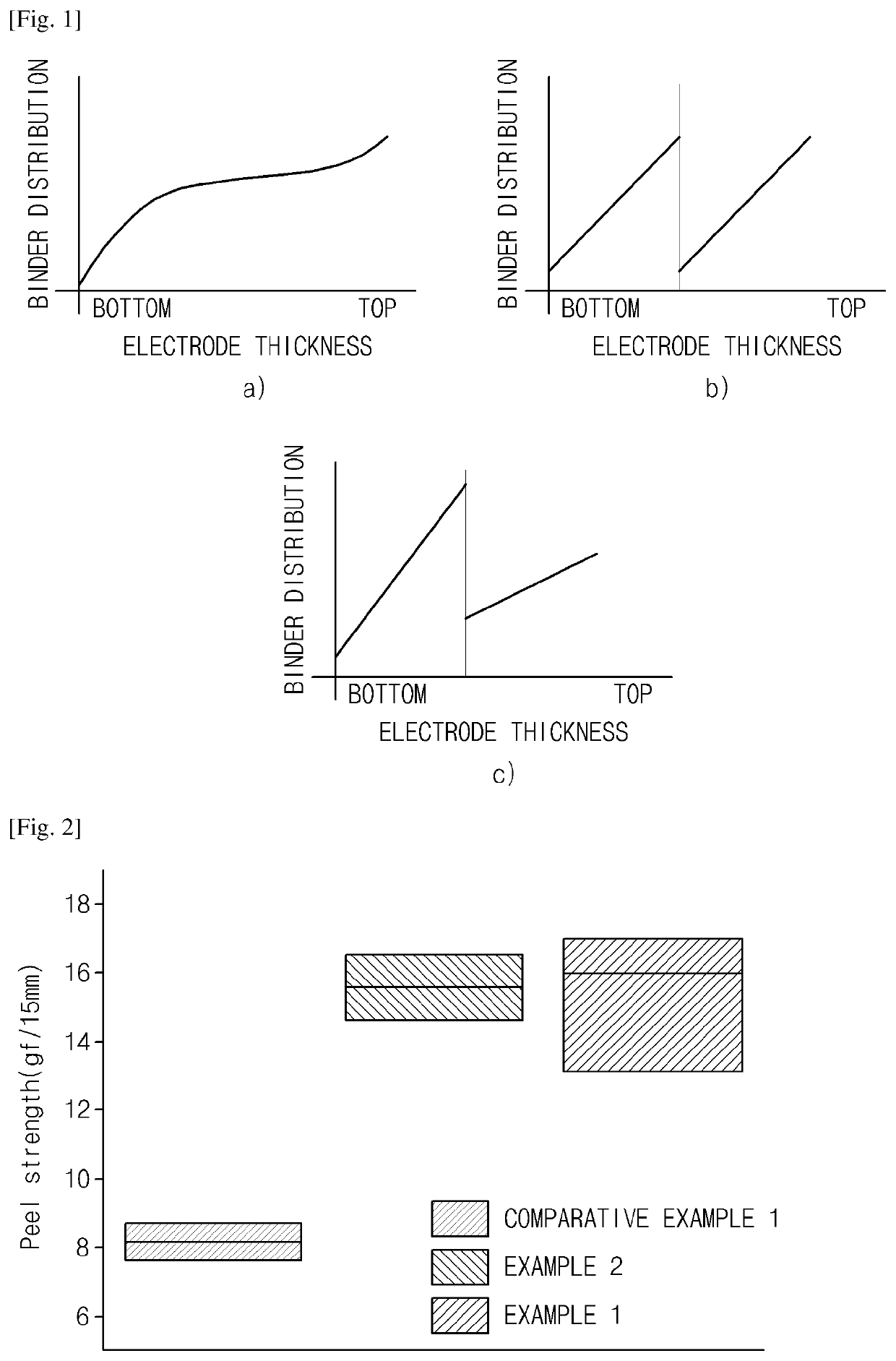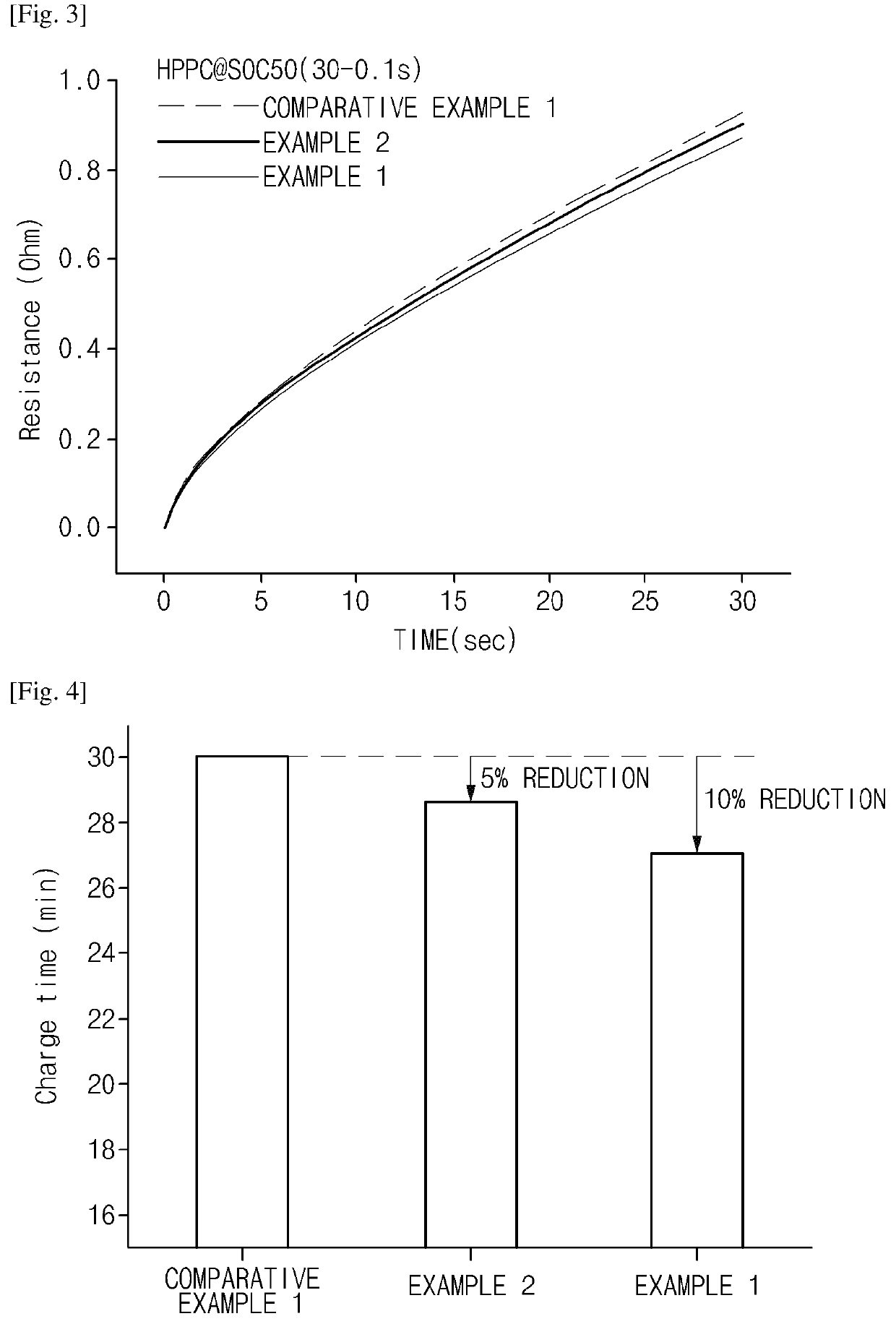Method of preparing electrode for lithium secondary battery and electrode for lithium secondary battery prepared thereby
a lithium secondary battery and electrode technology, applied in the direction of batteries, sustainable manufacturing/processing, cell components, etc., to achieve the effects of improving adhesion, and reducing the migration of a binder
- Summary
- Abstract
- Description
- Claims
- Application Information
AI Technical Summary
Benefits of technology
Problems solved by technology
Method used
Image
Examples
example 1
[0095](1) Preparation of Negative Electrode for Lithium Secondary Battery
[0096]A first negative electrode active material composition was prepared by mixing a negative electrode active material, in which artificial graphite and natural graphite having an average diameter (D50) of 10 μm to 20 μm were mixed, acetylene black (conductive agent), carboxymethylcellulose (CMC, thickener), and a styrene-butadiene rubber (SBR), as a first binder, in distilled water in amounts of 95.7 wt %, 1 wt %, 1 wt %, and 2.3 wt %, respectively, and a second negative electrode active material composition was prepared by mixing the same negative electrode active material, conductive agent, thickener, and binder in distilled water in amounts of 95.7 wt %, 1 wt %, 1 wt %, and 1.7 wt %, respectively.
[0097]A copper (Cu) thin film negative electrode collector was coated with the first negative electrode active material composition in a loading amount of 1.5 mAh / cm2 to 2.5 mAh / cm2 and subjected to primary dryin...
example 2
[0103]A lithium secondary battery was prepared in the same manner as in Example 1 except that a weight ratio of the second binder to the second negative electrode active material composition was 2.3 wt %.
experimental example 1
of Electrode
[0106]Adhesions of the negative electrodes for a lithium secondary battery prepared in Examples 1 and 2 and Comparative Example 1 were compared by using a generally known 180° peel test, in which a force (gf) applied until a tape was peeled off was measured while the tape was pulled at a speed of 10 mm / min, and the results thereof are presented in FIG. 2.
[0107]As illustrated in FIG. 2, with respect to the single-layered negative electrode of Comparative Example 1, it may be understood that the adhesion of the electrode was very poor in comparison to those of the multi layer-structured negative electrodes of Examples 1 and 2. Also, with respect to Example 1 in which drying was performed by setting the secondary drying temperature lower than the primary drying temperature, and the amount of the binder in the second negative electrode active material layer was lower than the amount of the binder in the first negative electrode active material layer, it may be understood tha...
PUM
| Property | Measurement | Unit |
|---|---|---|
| temperature | aaaaa | aaaaa |
| weight percent | aaaaa | aaaaa |
| weight percent | aaaaa | aaaaa |
Abstract
Description
Claims
Application Information
 Login to View More
Login to View More - R&D
- Intellectual Property
- Life Sciences
- Materials
- Tech Scout
- Unparalleled Data Quality
- Higher Quality Content
- 60% Fewer Hallucinations
Browse by: Latest US Patents, China's latest patents, Technical Efficacy Thesaurus, Application Domain, Technology Topic, Popular Technical Reports.
© 2025 PatSnap. All rights reserved.Legal|Privacy policy|Modern Slavery Act Transparency Statement|Sitemap|About US| Contact US: help@patsnap.com


